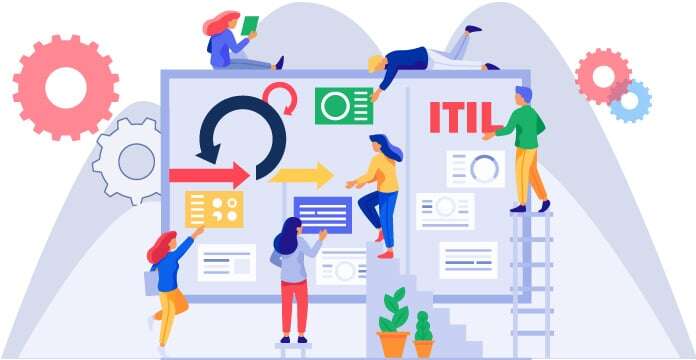Bringing ITIL 4 and Agile best practices together for quality service

Companies are always looking for new methods to handle their service management problems. However, solutions will no longer come from a single source that’s why we will be bringing ITIL 4 and Agile for quality service.
As a result, the goal is to arrive at the “lightbulb moment,” which is about a collaboration among people and the varied ways they employ. Each technique is intended to produce a result for a team by identifying pain areas, solutions, and how value is generated.
It’s about attempting to perceive things from different angles in my work as a Service Management Lead, including DevOps, Agile project management, and ITIL, with the latter focusing on boosting value co-creation between teams.
But what are the major hurdles in ensuring that various teams operate collaboratively?
Identifying common ground and fostering trust
One of the most difficult obstacles to team collaboration is also one of the most common: “We’ve always done things this way; why should we change?”
If a company wants to truly assist consumers – by putting themselves in their shoes and considering how to improve the customer experience – all departments must embrace a different perspective. The most important aspect of an organization’s culture is a mentality shift. It identifies behavior that has a direct impact on customer interactions. That entails taking the first step on a journey, delivering results, and always improving as you go.
Again, the ITIL 4 framework fosters a creative culture by allowing employees to go where they are best for the firm while providing “guide rails” for safety.
Even as an ITIL 4 supporter, you’ve had to understand the value of accepting new methodologies.
Bringing ITIL 4 and Scrum together
The team is led by an Agile team that uses approaches such as two-week sprints and retrospectives, among others.
So, recently receiving PeopleCert’s Scrum Master certification has given me a better understanding of how the team operates. It has also demonstrated how ITIL, and even PRINCE2 Agile, can coexist with Scrum and DevOps.
ITIL 4-trained individuals, I feel, may benefit from iterative, Agile approaches; finding a happy medium between using processes and facilitating change, while also knowing how standards may differ from team to team.
It all comes back to successful collaboration – putting yourself in the shoes of others to work better together.
With an Agile certification, You can now recognize the distinctions between this and ITIL and begin to bridge the gaps. Lastly, establishing common ground with colleagues in the same and other teams, as well as being cross-trained, is important.
Want to know more about ITIL 4 and Agile? Visit our course now.
What is the point of combining various best practice approaches to service management?
Collaboration across multiple best practice techniques has one overarching goal: to ensure the unifying goal of producing solutions that are more customer-centric and generate value outcomes.
If you’re unsure of the value you’re aiming for and aren’t altering and changing to improve and attain it for the customer, you’ll be disconnected from both your employees and your customers.
By gaining early wins, showcasing fixes, and creating outcomes, you are more likely to inspire individuals to listen and implement best practice ideas that they may have rejected earlier.
Discover more about Bringing ITIL 4 and Agile best practices together for quality service. Visit us here.




Comments ()